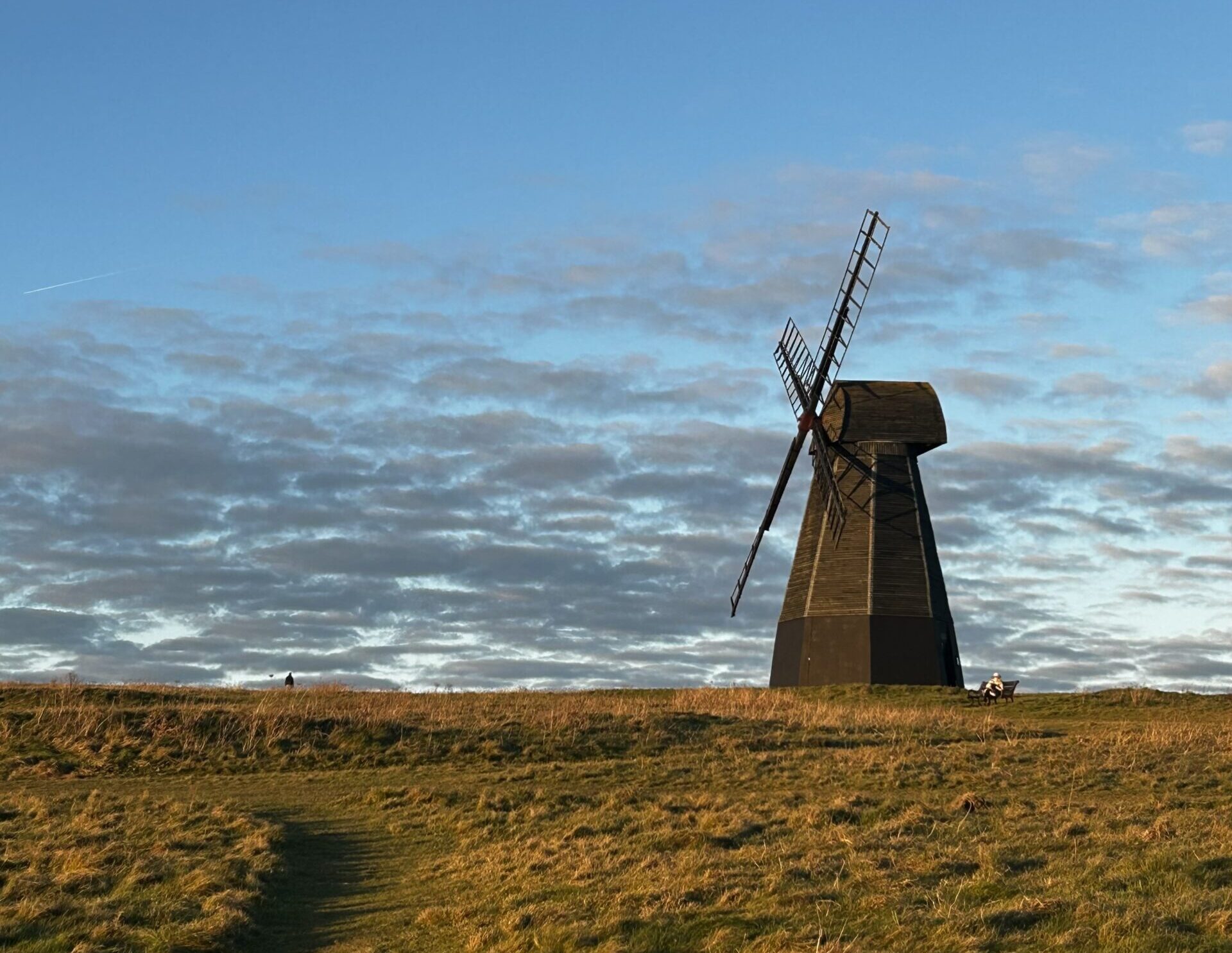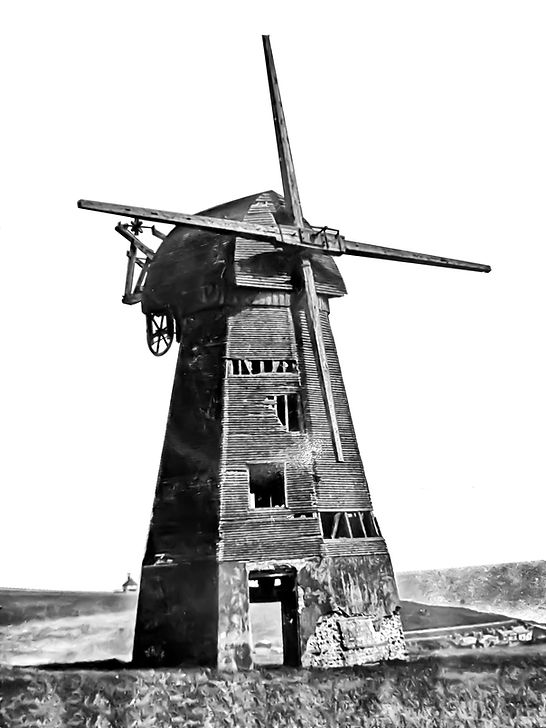On a blustery September morning, a few hours before my first class of the year, I ventured out to Brighton’s nearest seaside cliffs, alone. My stroll under the mossy chalk walls to the coastal town of Rottingdean brought me everything I’d hoped for on that emotionally turbulent day. It was restorative. What I did not expect to find, however, was the striking wooden silhouette of Beacon Mill on the thick grassy horizon.
The Vanishing Warrior
Beacon Mill, an underestimated Brighton landmark (that you’ve probably glossed over in your friend’s Instagram story), has stood for over 200 years and has an extraordinary array of history to show for it. Eventually used to grind corn, the windmill’s most curious tale comes from before it was even constructed. In June 1802, when digging foundations for the mill, workmen discovered the skeletal remains of an ancient warrior and his sword. Mysteriously, though, when the workers returned from a tea break, both items had vanished and were never seen again!
Once sold by auction at the White Hart Inn in Lewes (still existing today), the black mill’s sails turned three pairs of stones to grind flour for Rottingdean bakers for nearly eight decades. Just a short year after opening, though, a boy named Hyde played too closely under the sacks of wheat being pulleyed up the mill’s facade. When the rope suddenly tore and dropped the sack, Hyde broke his leg underneath it!
The Children
Fifty years later, the dangers of the mill (and generational lack of safety precautions) continued to cause misfortune to local children. On a visit to his grandmother, seven-year-old Henry Smith familiarly played too close to Beacon Mill’s sweeping sails. His uncle, hearing a jerk in the mill, went outside to find Henry unconscious beneath the beams. He later died in Sussex County Hospital.
The mill has a foreboding ominosity to it. As you stand under its walls, you can’t help but feel tied to its stature. In Rottingdean, the mill towers over the village’s western roofs and can be seen for miles around. It is, as its name so meticulously suggests, a beacon.
The Great Gale
After a lifetime of serving hot rolls to nearby villages, the windmill went up for rent in 1877 for a mere £40 a month! Unfortunately, before finding new owners, the mill’s sails were blown off by the Great Gale of 1871, a deadly storm that battered England’s coasts and claimed over 70 lives. The damage to Beacon Mill prompted the end of its working life, and subsequently, the parish initiated plans to tear the structure down. Luckily, whatever the cause a hundred years ago, the delay in demolition was critically responsible for the mill’s continued existence today.
Another article you may enjoy: Hopping Around Brighton: A Pebbled Paradise!
Abandoned on the horizon for over 50 years, the mill stood derelict, panels missing, bricks broken, holes gaping. In 1922, just as looming demolition threatened the beacon once more, a local reverend single-handedly rescued the mill from yet another close shave. Lewis Verey, Vicar of Rottingdean at the time, raised enough funds from the village not only to repair the beacon but to safeguard the site’s preservation for the next century.
The Sunsets
Today, at 223 years old, Beacon Mill continues to stand sturdy. Modestly concealing its enormous history behind safely closed doors, the structure’s dark panels soak Brighton’s blushing sunsets over the sea each night.
As a beacon throughout my time at Sussex, the windmill marks the finish line of my seaside runs. It is my haven through turbulent times and the permanent site of my summer night picnics. Surrounded by thick grass hills gusting in the coastal breeze, passersby can’t help but be enchanted. So, whether you’re a seaside runner, a South Downs lover, or just a student looking for somewhere to go, I urge everyone to take the short journey to Beacon Mill and let this tiny story of Sussex history unfold under its wooden sails.


